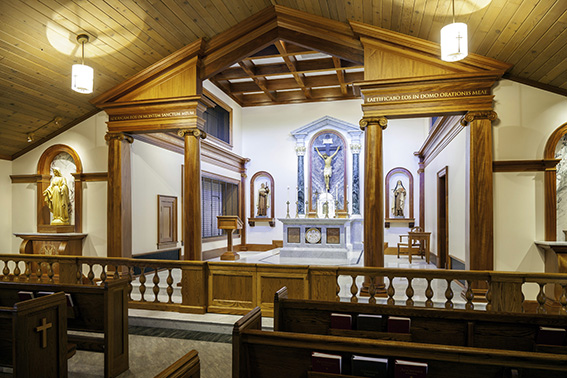Vivat, Crescat, Floreat
A New Carmel
DOI:
https://doi.org/10.17979/aarc.2013.3.0.5109Keywords:
Carmelite, constitutions, Elijah, ornament, sacred architectureAbstract
The Carmelite Order has a distinctive spirit of contemplation which calls for an autonomous figurative language of architecture. Cloistered Carmelite Nuns live in a symbolic desert, the enclosure of their monastery, just as early followers of Elijah lived in hermitages scattered across Mount Carmel in the Holy Land. Despite their call to simplicity, Carmelites are permitted to creatively ornament their monastery chapels. This paper provides an introduction to the Carmelite spirit, architectural implications of their constitutions, examples of Carmelite foundations, and principles for a new Carmel.
Downloads
Metrics
References
Abundis Canales, Jaime Antonio. 2007. La huella carmelita en San Angel I. Córdoba: Instituto Nacional de Antropología e Historia.
Birksted, Jan K. 2013. An Architecture of Ineloquence: José Lluis Sert’s Carmel de la Paix. A Study in Modern Architecture and Religion. London: Ashgate Publishing.
De Leonardis, Francesco ed. 2005. Brescia: The Cloisters. Brescia: Fotostudio Rapuzzi.
du Bocage, Barbié y Alexandre François. 1834. Dictionnaire Géographique de la Bible. Paris: De Crapelet.
Friedman, Elias y Silvano Giordano ed. 1995. Carmel in the Holy Land: From its Beginnings to the Present Day. Arenzano: Il Messaggero di Gesù Bambino.
History of Paris, from the Earliest Period to the Present Day. 1832. Paris: Galignani.
Maginnis & Walsh, Architects. 1919. «The Carmelite Convent, Santa Clara, California», The Architectural Forum 30: sp.
Regla y Constituciones de las Monjas Descalzas de la Orden del Beatísima Virgen María del Monte Carmelo. 1927. Burgos: El Monte Carmelo.
Rouchon Mouilleron, Véronique. 2001. Cloisters of Europe: Gardens of Prayer. New York: Viking Studio.
Sturm, Saverio. 2011. «Liturgia e architettura nel Carmelo riformato. Archetipi, miti, modelli», Revue d’Histoire Ecclésiastique 106: 61-96.
The Discalced Carmelites of Boston and Santa Clara. 1927. Carmel: Its History, Spirit and Saints. New York: P.J. Kennedy & Sons.
Tweed, Thomas A. 2011. America’s Church: The National Shrine and Catholic Presence in the Nation’s Capital. New York: Oxford University Press.
















